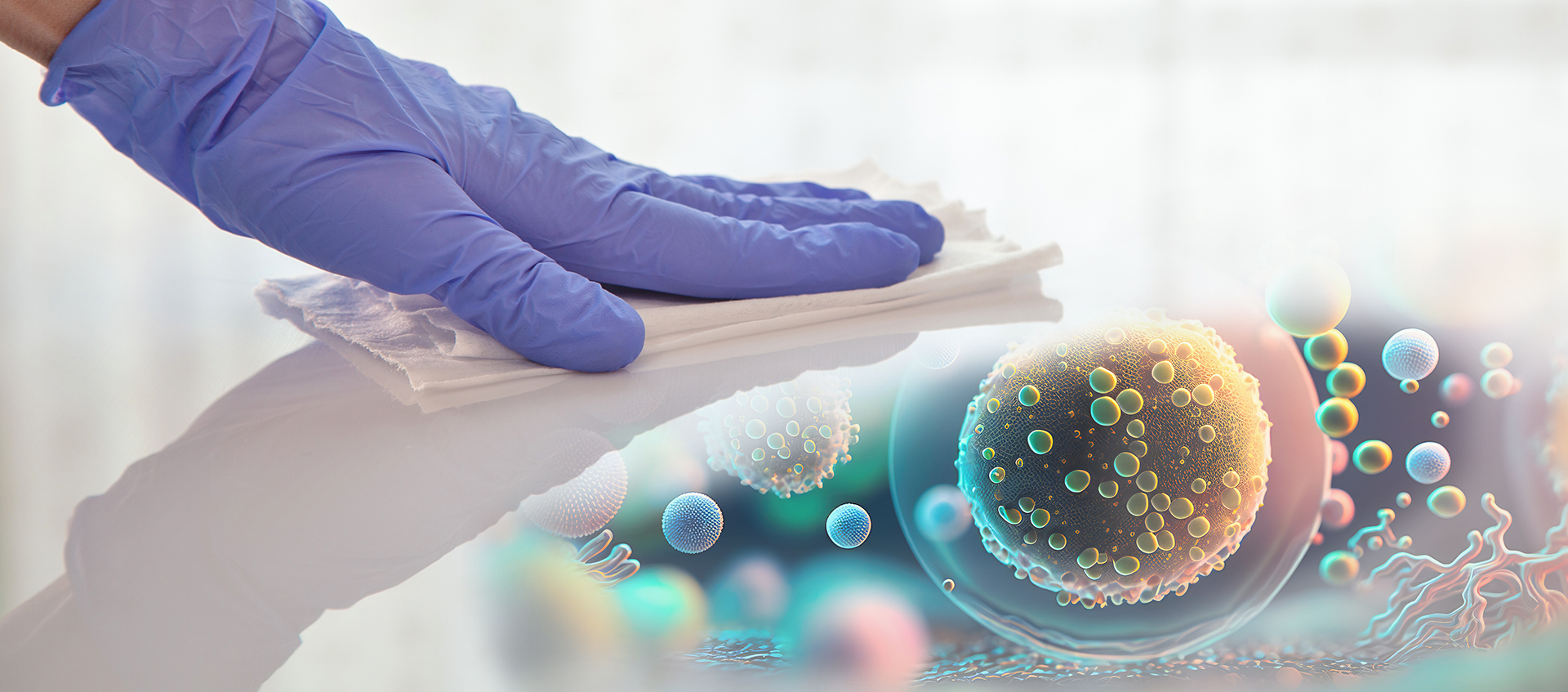[Ed. Note: The following is an excerpt from the chapter of the same name in the forthcoming APPA publication, Operational Guidelines in Educational Facilities: Custodial. The complete chapter includes sections on Cleaning Process Indicators for Environmental Surface Cleaning and ATP Testing for Cellular Soils. APPA thanks its colleagues at CIRI, Cleaning Industry Research Institute, for their expertise and collaboration.]
Cleaning is the process of removing unwanted matter from an environment, such as a building (built environment). The goal of the process of cleaning is that the building will be free of unwanted matter. But how clean is clean? And how do we measure to determine whether the cleaning process has left the building free of unwanted matter?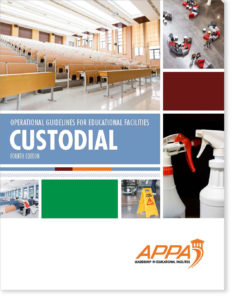
Before we measure, we need to understand what the unwanted matter is and whether this matter can have a negative health impact. If it can, we are cleaning for health, because our efforts are directed at removing unwanted matter recognized as posing a potential human health risk. This will affect the choices we make about the ways we measure.
In truth, “free of unwanted matter,” while a worthy goal, is not realistically achievable in real-world situations involving inhabited built environments. Thus, scientific measurements characterize and quantify the outcome from cleaning processes. Those measurements help determine if a building or surface is acceptably cleaner after the cleaning process is completed and whether a set goal or standard of cleaning was achieved.
Sometimes measurement is simple and straightforward. Take, for example, window cleaning. The outcome of effective window cleaning is easily seen visually with crystal clear and clean windows. The cleanliness of the windows before and after the cleaning is easily recognized. Alternatively, the outcome from an ineffective window cleaning process is equally visible and is often characterized by smearing and streaks. Any cleaning supervisor or inspector can objectively assess the results using the eye test.
The cost of cleaning includes labor and materials and is measured in dollars and cents. An effective window cleaning job will entail an amount of time, some cleaning chemicals, and some equipment, and the outcome will be clear and visible. A poor outcome will be seen and flagged to be redone correctly, and there will be an additional cost. The cost of repeating the work will be absorbed by the window cleaning contractor, if outsourced, or by the organization if the work is done in house. The additional cost associated with redoing the work is an ineffectiveness cost.
One thing the COVID-19 pandemic has taught us is that effective cleaning is important to health. Consumers everywhere are concerned about the level of cleanliness in the environments where they work, study, and live.
What happens when the cleaning outcome is poor, but the results are not easily perceived? Without good measurement science, determining whether a cleaning process has been effective is quite difficult. Does this mean that, if poor cleaning results are not detected, the ineffectiveness cost is saved? Or does it mean, rather, that the cost associated with the ineffective cleaning has been wasted?
One thing the COVID-19 pandemic has taught us is that effective cleaning is important to health. Consumers everywhere are concerned about the level of cleanliness in the environments where they work, study, and live.
That is why it is important to measure cleaning effectiveness in addition to the labor and material cost of the cleaning process. The best way to measure the effectiveness of a cleaning process is to measure before and after the cleaning. Unless cleanliness can be shown to be measurably better after the cleaning process is finished, the cleaning is ineffective and the investment is wasted.
Why Surface Cleanliness is Important
Certain materials and microbes in buildings can result in health risks to humans. For example, asbestos is a naturally occurring material that can cause significant respiratory diseases including cancer. When it is found inside a building it must be removed. A variety of microorganisms that can cause infectious illness in humans may enter a building via already-infected people who may not know they are carrying and shedding the microbes or are about to develop the symptoms of an infectious disease. COVID-19 is an example of an illness caused by a virus that is primarily spread via respiratory particles—an infected person breathes out virus particles into the air zone—that are produced in high volume even before the person shows significant symptoms or illness.
In fact, a vast number of infectious diseases are caused by microbes, including viruses, bacteria, and fungi, that can be spread within buildings. Other microbes are spread by contact between an infected and uninfected person.
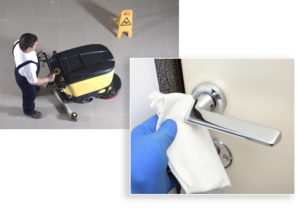 Microbes from an infected person can also spread via direct contact with an inanimate surface when a non-infected individual touches such a surface previously touched by an infected person. The microbes can attach to the hands of the uninfected person and the cycle of transmission is perpetuated without the infected and the uninfected persons ever coming into direct contact. Examples of highly contagious microbes found on commonly touched surfaces include cold and influenza viruses, MRSA, enterococcus, and norovirus.
Microbes from an infected person can also spread via direct contact with an inanimate surface when a non-infected individual touches such a surface previously touched by an infected person. The microbes can attach to the hands of the uninfected person and the cycle of transmission is perpetuated without the infected and the uninfected persons ever coming into direct contact. Examples of highly contagious microbes found on commonly touched surfaces include cold and influenza viruses, MRSA, enterococcus, and norovirus.
It is important to note that none of these infectious agents are visible to human vision unaided by a microscope (or something stronger). Yet, just one infected person can spread these highly contagious bugs to many others. The critical role of the cleaning process as it relates to health is to remove these microbes, together with other dusts and soils, from the building’s highly touched surfaces so that the cycle of disease transmission is interrupted.
The emphasis on high-touch surfaces (HTS) is perhaps the most important point to remember. A significant focus of building cleaning as it relates to health impact should be on effective cleaning (removal) and, as required, disinfection (inactivation of residual microbes) of HTS.
How We Measure to Detect Harmful Microbes
There is no one perfect test. In fact, most of the tests are complex and results take too long to get and only provide part of the answer. Often, by the time results are obtained, the building should and would have been cleaned several more times and the test is no longer meaningful or beneficial for ensuring cleaning effectiveness.
What is needed is a good indicator test that will provide a quick answer so that timely action can be taken to correct any cleaning deficiency or cleanliness problem.
Fortunately, there are now a variety of quick and convenient measurements that have been scientifically proven to provide a useful indicative measure of the cleanliness of a building’s HTS. Below are some of the major approaches being used to measure surface cleanliness.
Microbiological Testing
Testing a surface for microbes is the gold standard of surface cleanliness measurements. Unfortunately, with so many different microbes to test for, it costs too much and takes too long for ordinary use. That said, when there is a specific disease of concern, there is no better method than microbial sampling. Modern technology is making the process of recovering microbes and identifying those of concern much easier and faster. Instead of waiting weeks to know what is on a surface, the answer is usually available in just a few days.
Instead of waiting weeks to know what is on a surface, the answer is usually available in just a few days.
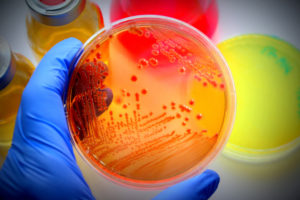 This is highly relevant for disease outbreaks associated with food poisoning, outbreaks of gastrointestinal illnesses, or healthcare-associated infections. Testing food contact surfaces, implements and utensils, tables, and food-service areas can reveal a large amount of useful information for investigators. Similarly, testing of HTS in bathrooms or restrooms, desks, telephones, computer keyboards, and the like can be quickly undertaken by trained technicians or scientists.
This is highly relevant for disease outbreaks associated with food poisoning, outbreaks of gastrointestinal illnesses, or healthcare-associated infections. Testing food contact surfaces, implements and utensils, tables, and food-service areas can reveal a large amount of useful information for investigators. Similarly, testing of HTS in bathrooms or restrooms, desks, telephones, computer keyboards, and the like can be quickly undertaken by trained technicians or scientists.
In buildings where dampness and mold are a problem, surface sampling is a reasonably quick and easy approach to microbial testing. This would apply to buildings affected by flooding or other forms of water damage.
The sampling methods for fungal contamination normally involve captured samples recovered from surfaces and sent for analysis. The sampling should be done by a trained technician proficient in the skills required for water damage restoration work, an industrial hygienist, or a mycologist (a scientist who studies, recovers, and grows molds). Fortunately, due to the larger size of most fungal species, identification is often by visual recognition under a microscope, and only rarely is regrowth of the recovered species required for identification.
Dust Sampling and Residue Testing
In some circumstances, chemistry testing through dust sampling or residue testing is also a gold standard for environmental monitoring of cleanliness. Samples can be collected from the air via a suction sampling device and quantified and assessed for size. Particle counters are also a real-time tool for assessing the quantitative presence of airborne dust in a location. Dust may seem just an aggravation to cleaning contractors, but in fact, dust volume and composition will indicate other health-related factors for a building overall. Each of us sheds billions of skin cells every day, and windows and doors allow ingress of outside dust and other airborne matter. Pollen during spring, summer, and fall can have a negative health impact on vulnerable individuals so the dust load of a building should be kept as low as possible. Unfortunately, there is at present no quantitative recommendation as to what constitutes a safe level of dust in a building.
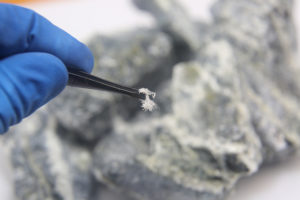 We do know that poorly maintained equipment, such as vacuum cleaners, can easily spread dust rather than capture and remove it from a building. The use of well-maintained, high-performance vacuums is critical to ensure effective cleaning and minimize dust resuspension.
We do know that poorly maintained equipment, such as vacuum cleaners, can easily spread dust rather than capture and remove it from a building. The use of well-maintained, high-performance vacuums is critical to ensure effective cleaning and minimize dust resuspension.
The health implications for dust are not only the direct impact of allergenicity for vulnerable people, but also introduction of dust into buildings can act as a food source for microbes, insects, and other vermin. In the world of ecology, little things get eaten by bigger things, which are in turn eaten by bigger things still. An integral part of the process is defecation and degradation. Bacteria and other microbes are key elements of the degradation process.
All this ecology—eating and dying and degrading—is manifested in building dust, and all of it has the potential to impact the health of the human occupants.
Indoor Air Quality in Schools
While a variety of air-testing methods exists, at present there are no generally accepted standards for safe indoor air quality. As the U.S. EPA has described in various publications designed for schools that are available online, a variety of variables and factors come into play when assessing IAQ. Here is a good starting point for useful information: https://www.epa.gov/iaq-schools/indoor-air-quality-tools-schools-action-kit.
In general, two things are most important for safe and healthful indoor air: ventilation (fresh, clean air) and filtration (removal of harmful particles and microbes from the air). The COVID-19 pandemic prompted the development of a plethora of new products. Some have been found effective in limited and special circumstances. Others claim to be effective based on laboratory tests, but this may not translate to real-world environments. Overall, the more sensational the claims, the less likely the product will meet expectations. We council caveat emptor: let the buyer beware.
Conclusion
The science behind cleaning and cleanliness measurement is dramatically improving. Building managers now have a greater array of tools to ensure that buildings are thoroughly and effectively cleaned. These tools are relatively easy to use and inexpensive compared to older methods such as microbiology. A good sampling plan will maximize the benefits of these new measurement tools to allow building managers to more effectively improve the cleaning standards and cleanliness outcomes in the buildings under their care and control.
Greg Whiteley is adjunct associate professor at the University of Sydney in Sydney, Australia; he can be reached at [email protected]. Eugene Cole is the director of research at LRC Indoor Testing and Research in Cary, NC; he can be reached at [email protected]. John Downey is chairman at the Cleaning Industry Research Institute in Granville, OH; he can be reached at [email protected]. This is their first article for Facilities Manager.
